It is a great pleasure to invite you to participate in the 20th International
Symposium FORAGE CONSERVATION in Lednice, Czech Republic, June 15th - 18th 2026.
The Symposium will present scientific knowledge from the sphere of forage production,
silage production, regulation of fermentation process, technology of forage conservation,
silage feeding, nutrition and sustainable animal agriculture.
close sections
You can find the registration forms in the right-hand column of this page (below the ISFC logo).
Pre-registration
FREE
Complete the form on our web portal:
registration.isfc.eu
This registration is free. This creates your account. You can then submit your paper/poster and purchase a symposium ticket.
Your personal data will be used only for communications related to this symposium (announcements, updates, organisational information).
Registration of papers or posters
FREE
One author submits the paper/poster;
the Scientific Committee will contact the corresponding author about acceptance.
To submit, you must have an account at https://registration.isfc.eu.
There is no limit to the number of submissions.
See Instructions for Authors for details.
Registration of participants fees
Payed
Tickets are available at
https://registration.isfc.eu under:
- Your Participantion (registration fees)
This is the only paid registration and it is required for every participant (attendees and speakers). Each participant must have a valid ticket. Tickets are available on
A payment confirmation (voucher) will be sent after we receive your payment. To help us identify your payment, please include your billing details and payment reference.
On-site cash payment is available at the registration desk in Lednice on Monday (15th June 2026)
or on Tuesday (16th June 2026). Payment is accepted in CZK only.
You will be inform about your registration on isfc.eu by an automaticaly generated e-mail.
Please comunicate with us by e-mail only (
info@isfc.eu).
If you do not receive the automated e-mail within a few minutes, first check your spam/junk folder and e-mail filters.
Contact our members of committee (Ing. Sona Mala, Ing. Vaclav Jambor, CSc.).
close sections
close this section
Deadline for the registration of fees is on March 31, 2026. Later registration will be more expensive.
Conference fee
7500 CZK before March 31, 2026; 9000 CZK later
The delegate fee include:
- Ticket / Voucher
- Interesting works - written by the people from the whole World
- Symposium Proceeding (english)
- Lunch - every day
Banquet fee
1200 CZK before March 31, 2026; 1450 CZK later
The first day of the symposium (16th June, 2026) will be organized banquet for the
participants of the symposium.
Excursion fee (Thursday, 18th June 2026)
1700 CZK before March 31, 2026; 1900 CZK later
After the end of symposium (on Thursday, 18th June, 2026) will be held an all-day trip.
You can look forward to:
- MENDELU Faculty of Horticulture, Lednice
- Castle Lednice - UNESCO
Accompanying person fee
2200 CZK before March 31, 2026; 2200 CZK later
The accompanying person has special program.
Online access
1000 CZK before March 31, 2026; 1500 CZK later
Online access allows participants to follow selected parts of the programme remotely. It includes access to the live stream and any recordings made available after the event.
Memory book 2019, 2023
1000 CZK before March 31, 2026; 1200 CZK later
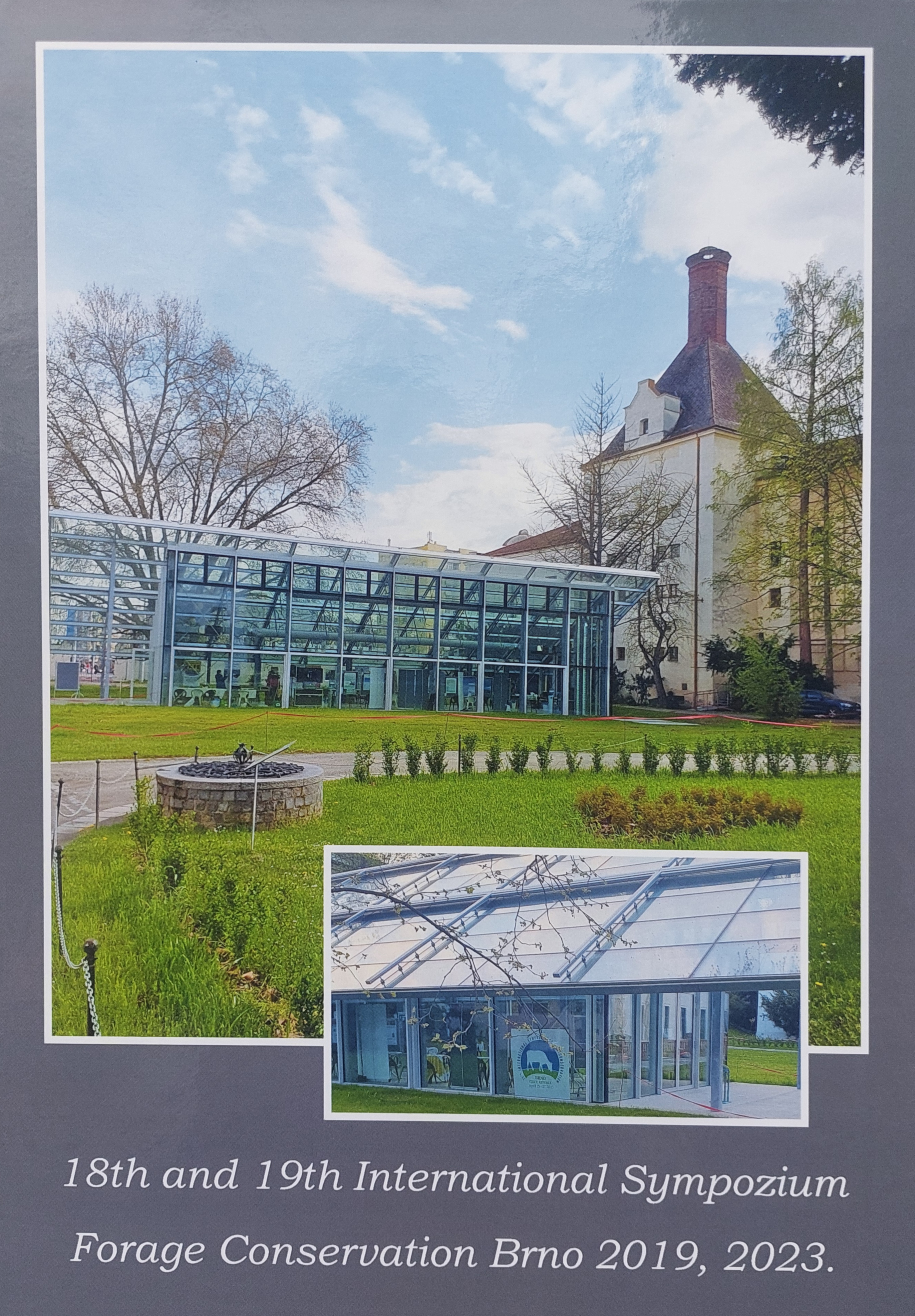
|
The Memory Book is a photo book capturing highlights from previous ISFC events. It showcases key moments, participants, and the atmosphere of past symposia. It is a keepsake for those who wish to look back on the history and development of the conference.
|
Extra copy of the proceedings
400 CZK before March 31, 2026; 600 CZK later
A printed extra copy of the official conference proceedings for personal use or archiving.
NOTE: Payment of registration fees can be made by bank transfer, or in cash (CZK only) at the Registration Desk on Monday 15th June 2026 and Tuesday 16th June 2026.
NOTE: Actual prices of fees are possible to find at registration.isfc.eu in section "Your participation".
RECORDING NOTICE: Video and photo recordings will be taken during the symposium for organisational and promotional purposes.
Cancellation Policy
Only cancellation or change requests sent to info@isfc.eu will be taken into consideration.
- You may change the name of a registered participant at any time. No additional fee is charged for a name change.
- Cancellations received up to 30 days before the event: full refund of the registration fee (bank charges may apply).
- Cancellations received 29–14 days before the event: 50 % refund of the registration fee.
- Cancellations received less than 14 days before the event: no refund possible.
- If a participant does not attend the event without prior notice, the registration fee cannot be refunded.
- All refunds will be processed after the symposium.
close this section
close this section
About Lednice
Lednice is a well-known historical town located in South Moravia, approximately 50 km from Brno,
20 km from Břeclav, and 90 km from Vienna. It is part of the Lednice–Valtice Cultural Landscape,
a UNESCO World Heritage Site famous for its chateau, gardens, and unique landscape architecture.
The area is one of the most visited tourist destinations in the Czech Republic, offering a calm atmosphere, rich cultural heritage,
and easy access to nature, cycling routes, and local wine regions.
Information about Czech republic.
The main landmark of Lednice is the Lednice Chateau, surrounded by one of the largest landscaped parks in Europe.
Nearby attractions include the Minaret, the Palm House, the John’s Castle, and several romantic pavilions throughout the UNESCO complex.
For more information and videos, you can find official presentations on the Czech tourism channels and regional websites.
Video Presentations
Official videos introducing the Lednice-Valtice area and South Moravia.
How to reach the place?
🚗 By car
You can reach Lednice easily by car. A motorway vignette is required on Austrian and Czech motorways.
✈️ Airports
From Brno, Prague and from Vienna, you can travel by train to Břeclav.
close this section
close this section
NOTE: Hotel reservations are arranged only until the end of February 2026!
Hotel Štork
The hotel is a comfortable and well-rated family-run hotel located near the centre of the town.
It offers modern rooms, a quiet atmosphere, and friendly service, making it a convenient choice
for visitors exploring the Lednice–Valtice Cultural Landscape. The hotel is within walking distance
of the château, local restaurants, and public transport.
The hotel is located approximately 600 metres from the Mendel University campus in Lednice, which is about a 7 minute walk.
Room Types and Prices
Economy rooms have shared bathroom facilities,
while Comfort rooms include a private bathroom.
- Hotel Štork - double room with breakfast (comfort) - 3100 CZK
- Hotel Štork - double room with breakfast (economy) - 2700 CZK
The nearest bus stop is “Lednice, nám.”, served by bus line 555 and 570. The train station is only a 10-minute walk from the hotel.
Student hostel MENDELU Lednice
It provides comfortable and modern accommodation for students, researchers, and visitors.
The facilities are located within walking distance of the university campus, local services, and the Lednice–Valtice cultural landscape.
Guests can enjoy fully equipped rooms, study spaces, and a welcoming academic environment.
Room Types and Prices
Economy rooms have shared bathroom facilities,
while Comfort rooms include a private bathroom.
- Studen hostel MENDELU - doule room with breakfeast (economy) - 1200 CZK
- Student hostel Castel - double room with breakfeast (comfort) - 2100 CZK
The nearest bus stop is “Lednice, Valtická”, served by bus line 555. The train station is only a 5-minute walk from the halls.
Hotel Mario
Hotel Mario in Lednice offers accommodation right in the heart of the Lednice–Valtice area, just a few minutes’ walk from Lednice Chateau. With its comfortable rooms, friendly staff, and relaxed atmosphere, it provides an ideal base for visitors exploring the region’s landmarks, natural beauty, and rich wine culture.
Room Types and Prices
Economy rooms have shared bathroom facilities,
while Comfort rooms include a private bathroom.
- Hotel Mario - double room with breakfast (comfort) - 3200 CZK
The nearest bus stop is “Lednice, nám.”, served by bus line 555. The train station is only a 5-minute walk from the halls.
Hotels in neighborough
Due to high demand during the summer season, we recommend booking early to secure accommodation.
close this section
close this section
EDITORIAL:
For your manuscript to reach us safely and without delay, please register and upload it through
https://registration.isfc.eu,
which is the most dependable submission route.
Other contact methods may also be used and will be acknowledged, but we cannot ensure full and proper processing of manuscripts submitted outside the official system.:
NutriVet Ltd.
Vídeňská 1023
Pohořelice
ZIP code: 691 23
Czech Republic
E-mail: info@isfc.eu
Authors are requested to indicate their preference for oral or poster presentation at the time of submission.
Papers not accepted for oral presentation will automatically be considered for poster presentation.
Provisionally accepted papers will enter an editorial process and will be returned to the authors for checking
prior to inclusion in the proceedings.
The instructions for submission and publication are identical for all contributions, whether intended as spoken (paper) or poster presentations.
All contributions must be registered before 15th January 2026 using the web portal
https://registration.isfc.eu
and following the instructions provided below. Authors are responsible for the English quality of their papers and presentations. If any difficulty occurs, please contact us at
info@isfc.eu.
Papers will be reviewed by the scientific committee and authors will be informed of provisional acceptance or
rejection of the paper by 31st January 2026. Provisionally accepted papers will undergo an editorial process and will be returned for checking before inclusion in the proceedings.
Final acceptance of the paper will be confirmed once the delegate fee for at least one of the authors is received
by the early registration deadline.
NOTE: First, register your paper (Authors, Title, Abstract), then wait to the acceptance of your paper.
We will inform you via email about the acceptace of your paper.
Please, then you will be able to upload your paper via our portal.
HOW TO REGISTER AND UPLOAD PAPER
- Go to: https://registration.isfc.eu
- Fill the Pre-registration form to create your acccount (your account remains valid from previous events such as the 18th or 19th ISFC)
- Once you are sign in, open the"Your Papers (Publishing)"
- Click "Add a new article". This button will disappear once the submission deadline has passed.
- Fill in the form: Title, Authors, Abstract, Section, Type of presentation and then click "Insert"
- All your contributions will appear in a table on this page.
- You can edit your article information using the "note (edit) button"
- If needed, you may disable an article (it will not be deleted, only deactivated).
- After the deadline, please wait for the review decision. You will receive an email notification for each contribution indicating **acceptance or rejection**.
- Once your article is accepted, you can upload the file via the "PDF icon".
TIMETABLE FOR PAPERS:
Proceedings of the Conference will be distributed to delegates at the meeting. It is imperative, therefore, that the
deadlines and instructions are strictly observed.
Your accepted paper or poster has to be uploaded via the web portal
(
https://registration.isfc.eu).
The uploaded file should be suitable for reading into Microsoft Word 2021.
Preparation of manuscripts:
Length: Manuscripts prepared according to the formatting instructions below must not exceed the following limits (including abstract, tables, figures and references):
- Plenary paper max. 15 pages A4
- Paper and poster max. 2 pages A4 (≈ 9,000 characters)
Language:All papers must be written in English.
Format:Papers must be prepared on A4 paper, single-spaced, with margins of 20 mm on all sides. Times New Roman (or Times New Roman CE), 10-point font size must be used throughout the paper.
Reductions of font size (in text, tables, captions or references) are not permitted. Line spacing must be single.
Title:The title must be in bold, in lower case with capital initials. Please provide authors’ full names (not bold).
Affiliations should follow in lower case, without bold.
Text structure:
The manuscript must follow the structure:
- Abstract
- Introduction
- Materials and Methods
- Results and Discussion
- Conclusions
- References
Headings:
- Main headings : Capitals in bold and to the left
- Second headings : Lower case in bold and to the left
- Third headings : Lower case in italics and to the left
Text begins immediately after each heading. Headings should not be numbered.
Tables:Tables must be placed within the text in the desired position.
Each table must fit within the A4 page margins.
Table titles should be brief and precise, in lower case, not bold.
The table number should be in bold, left-aligned.
Layout and ruling of tables should follow the provided examples.
Figures:Figures should be kept to a minimum.
Titles should be brief and precise, in lower case, not bold.
The author’s name and the figure number should be in bold, left-aligned.
Summary: Will be maximal 10 line accepted for English version.
Species: May be referred to by full common English names followed by the scientific (Latin) name in italics and brackets at fires mention. Capitol letters associated with the English names can be dispensed with except where proper nouns are involved. Latin names should be typed in italics.
References to rates: should be in the form : kg/ha or kg/ha per day etc.
Concentrations: Should appear as g/kg, mg/kg etc. and not as percentages. Digestibility may appear as a decimal fraction or as a percentage value.
Spellings: Should conform to the preferred spellings given in the Concise Oxford Dictionary or the Oxford dictionary for Writes and Editors. The suffix - ize rather than - ise should be used in verbs taking this form (e.g. fertilise, utilise). Numerical data should be in SI (metric) units and standard abbreviations and statistical terms may by used without explanation (e.g. DM for dry matter, s.e. standard error, UK, EC etc.) Abbreviations using capital letters do not take full stops.
Footnotes: should be avoided in the text.
References: Should be cited in the text either in form of Anderson and Jackson (1997) or (Anderson and Jackson, 1997) depending on the context. When there are more than two authors use et al. after first name. All references cited in the text should be listed alphabetically at the end of the paper. Author's names, titles of journals and books should be given in full. For publications in another European language the original title of the patter or book should be given with an English translation of the title in square brackets.
Proofs: Will be corrected by the Editors and not returned to authors. The Editors reserve the right to make minor amendments without reference to authors. Papers requiring major precision will be returned to authors for amendment before the proof stage.
Reprints will not be available.
General: The following general guidelines should be followed to ensure uniformity of presentation.
Introduction: A brief statement should be made clearly stating the aims of the work and its relevance.
Materials and Methods / Results and Discussion:
It is expected that data will be replicated and subjected to an appropriate statistical analysis. Where this is not possible, e.g. large scale trials, the steps taken to ensure elimination of bias should be stated. Analytical methods should not be detailed unless novel but appropriate references quoted. The source of proprietary products, e.g. additives, should be given (e.g. XYZ plc, Cardiff).
When mean values are quoted e.g. crop composition, the number of samples and standard error should be stated. Do not use.
Conclusions: The main conclusions of the work and its relevance should be summarised.
For present of papers: Will be on disposition data projector.
References: It will not be possible for the Editors to check all references. Authors are asked to pay particular attention to the accuracy of references and their presentation.
PLEASE CHECK THAT YOUR PAPER DOES NOT EXCEED THE PERMITTED LENGHT WHEN PRINTED!
DO NOT FORGET TO ALLOW SPACE FOR FIGURES.
FOLLOW THE INSTURCTIONS GIVEN IN FORMAT.
DO NOT REDUCE PRINT SIZE.
Guidelines for the Preparation of Scientific Posters
Construction
- Make the poster fit a board length 1 000 mm and breadth 800 mm high.
- Posters can be made up on one large sheet or up to six smaller sheets (which can go in your suitcase!)
- Use thick paper (plastic coated is reasonable) or card.
- Divide the poster into sections (e.g. title, message, introduction, methods, results and conclusions). Make it clear in which order they should be read by numbering (1, 2, 3, ... or lettering A, B, C,...).
- Titles should be 2.5cm high, text 1cm high.
- Photocopy enlargements should be avoided as they produce poor quality
- Use a sophisticated lettering system, photographic enlargements or a high quality computer output.
- Keep logos discrete.
- No references.
Clarity is the key word
A simple graph (in colour), a table or a photograph will attract and aid understanding. Too many will confuse.
Golden rules!
- Posters are a visual way to let people know in the simplest of terms about your work.
- If people see and remember one visual image relating to one main point, then you have succeeded.
- The objective of a poster is not to explain every interesting aspect of an experiment; it is to show that aspect which is open to presentation through the poster medium.
- With a poster the medium and the message are closely connected. What you did and what the result was should be said in large print, simply and be instantly seen by the viewer.
Remember
Most people passing your poster are not interested in details - think how much of other people's posters you read! - give them a handout instead.
- Posters must be clear and easy to read. Type size should be large. If it is not visually clear, few people will make the effort to read it.
- Use less information, not more (i.e. a poster should not merely duplicate the summary).
- Respect the size of type suggested - this will ensure readability. If you think you need smaller text to include everything then you have too much information!
- The message - "the hook" - that you wish to impart should be the first thing that is read.
- Avoid design for design sake: colour should be used to enhance the story that you are presenting, not to show off!
- Consider a photo, table or graph, especially if it helps to explain your story. But not too many!
- Logos (maximum two per poster) should be discrete - this is a scientific meeting (10cm x 10cm maximum).
- Proof read, do it again, then get somebody else to do it!
- Ask yourself - which posters do you have time or the interest to read? Then compare those with your own.
Guidelines reproduced by kind permission of BSAS
close this section
close this section
The 19th of the International Symposium Forage Conservation (ISFC) have continued a long-standing tradition of sharing
cutting-edge knowledge in forage preservation and silage research, while highlighting the rapid shift toward precision
agriculture, sustainability, and modern harvesting technologies. ISFC was held in a broader international context, expanded
the discussion to advanced fermentation processes, silage quality, animal nutrition, and interdisciplinary innovations.
This symposium showcased key global trends, technological progress, and collaborative efforts that are shaping the
present and future of forage conservation.
- Plenary papers - Full lectures of 6 Plenary papers.
- Section one - Full lectures of 11 papers.
- Section two - Full lectures of 7 papers.
Full video record is available as The Youtube playlist.
Download all photos:
SPEAKERS |
PARTY |
OTHERS
Media wrote about us:


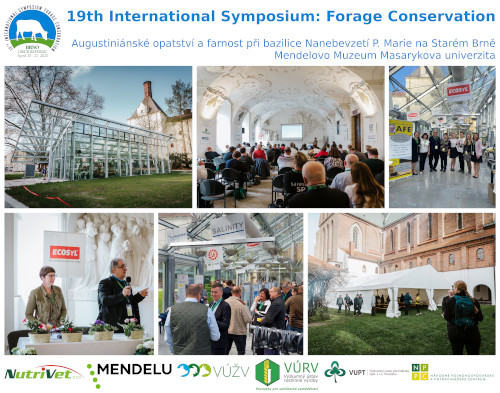

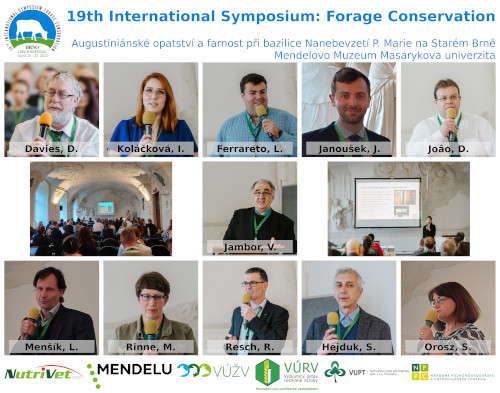

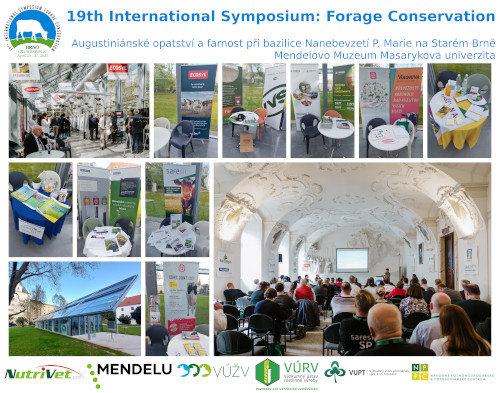


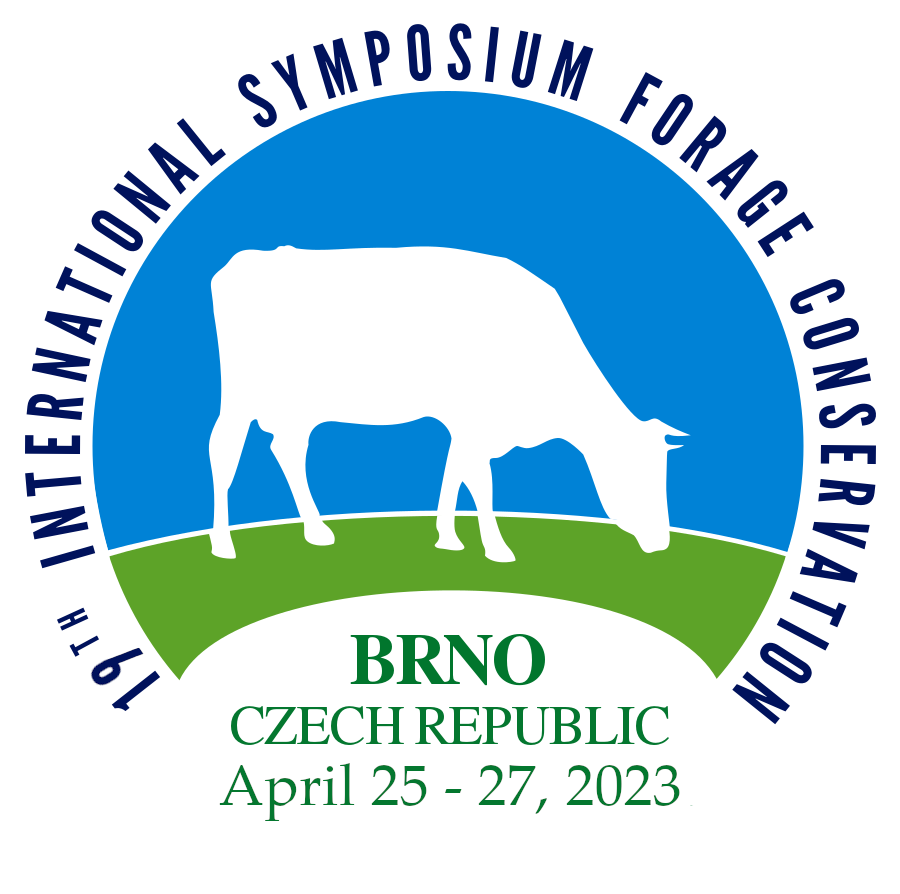
10th December 2025
Registration is open.